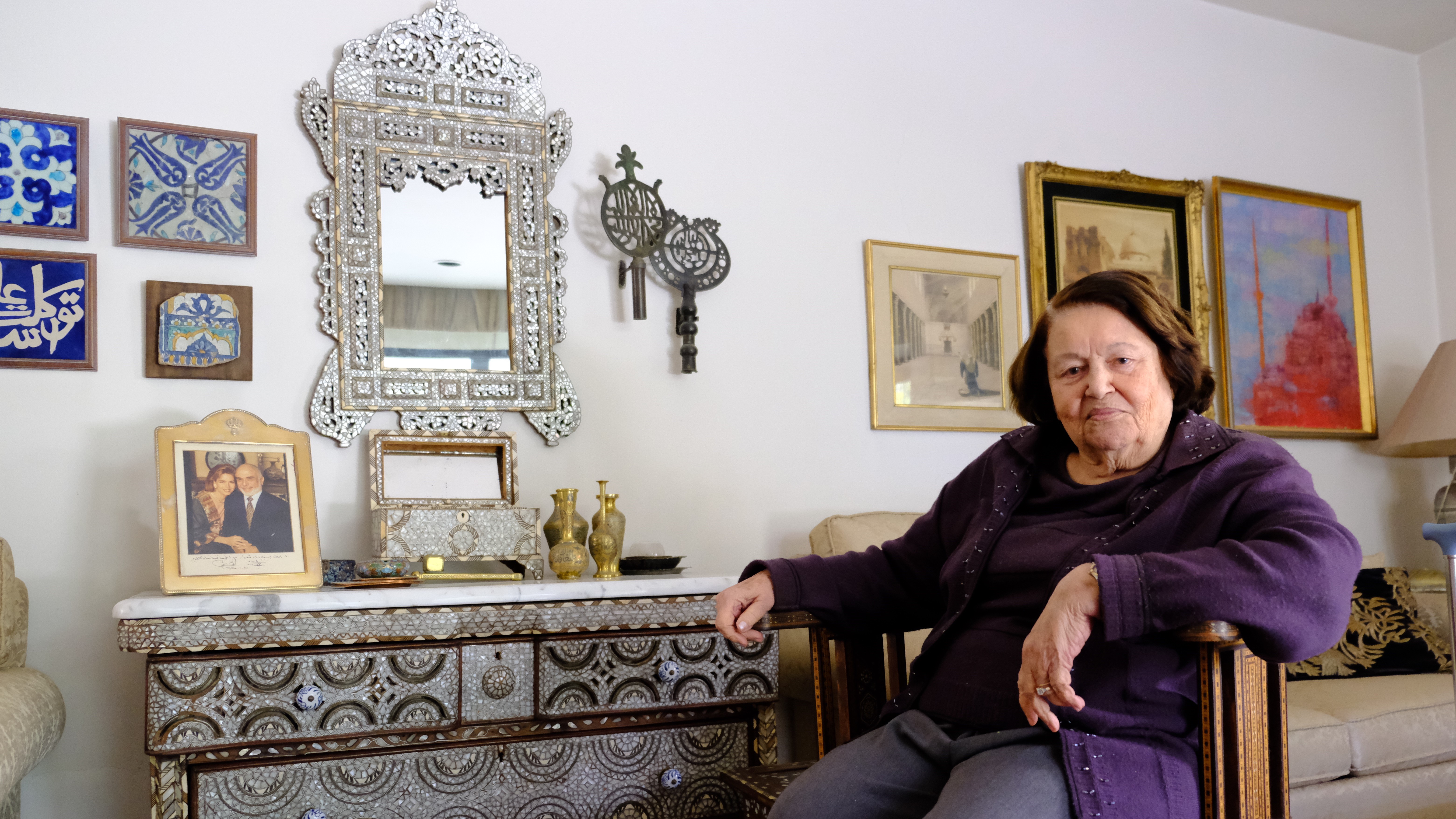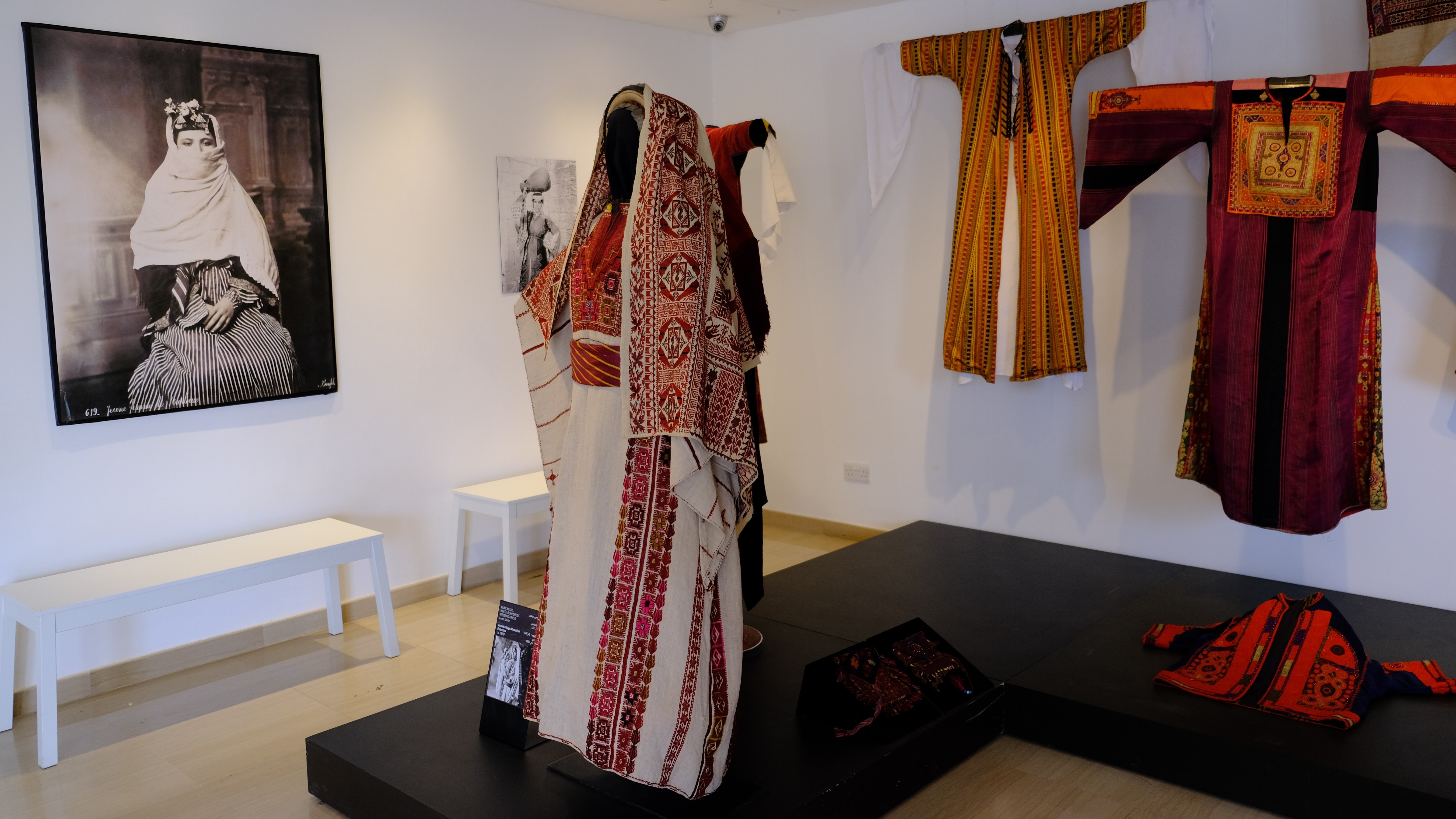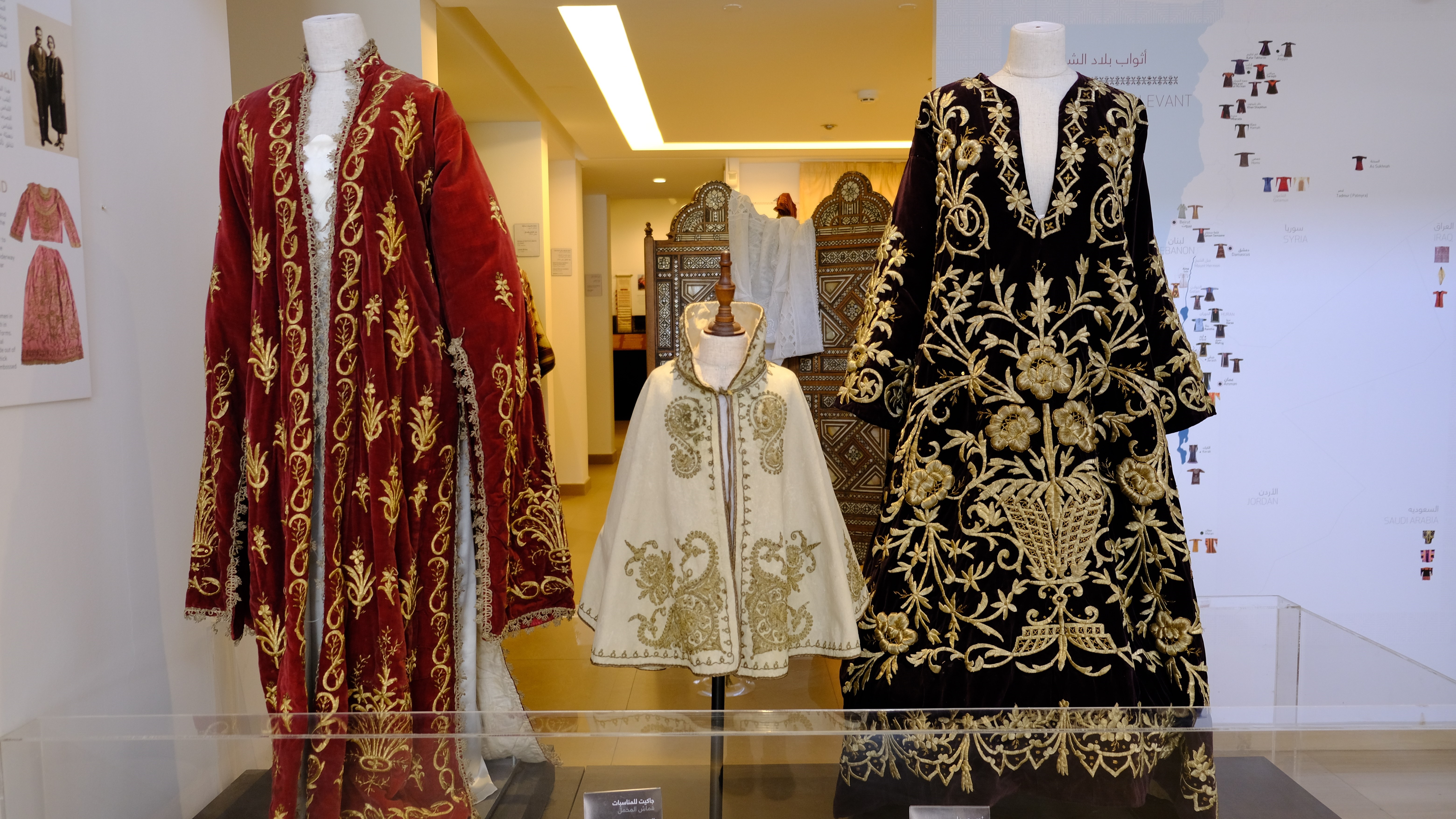The woman preserving handwoven history

“Embroidery was often connected to milestones in a woman’s life,” says Widad Kawar, who has amassed what is said to be the world’s largest private collection of traditional Levantine dresses. “Some of the dresses were made by girls as part of their trousseau. The women in the family – mothers, aunts, grandmothers – would often help with the embroidery. The knowledge was passed on from mother to daughter, and kept generations together,” she says.
For over 60 years, Kawar has been collecting women’s embroidery work, becoming a pioneer in raising awareness of the value of Palestinian, Jordanian and Syrian costumes. In 2015, she opened a museum named Tiraz – an old Arabic word for embroidery – next to her home in Amman, Jordan, to showcase some of the 2,000 pieces in her collection of dresses, textiles and jewellery from the region. The oldest piece in her collection is a dress from the 1880s.
“Each piece in my collection has a story to tell,” says Kawar. “Every region has an embroidery pattern, and every pattern has a story.”

Collecting dresses and women’s stories
From a young age, Kawar, who is Palestinian and grew up in the West Bank, used to see women around her embroidering the elaborate patterns of traditional dresses, known as thob.
Originally made and worn in rural areas, the embroidered dress became widespread, with each region displaying its own design. The patterns and colours also indicated women’s economic and marital status.
Kawar loved to see women wearing their embroidered best dresses on weekend markets in Bethlehem, where she grew up, and in Ramallah, where she went to school. But after the 1948 war that led to the establishment of the state of Israel and the displacement of hundreds of thousands of Palestinians, the costumes started disappearing.
With the destruction of villages and the rupture of rural life, women lacked the means to continue making richly embroidered dresses. “The beautiful scenes I had seen before of women wearing their best embroidery in the weekly markets were gone,” she says. Dispossessed and impoverished, many Palestinian women became refugees and were forced to sell their dresses.
“I bought some of these costumes, but I also talked to the women who used to own them to know their stories,” says Kawar. “The more I talked to women, the more I realised the importance of these patterns, and the need to preserve them.”
For Kawar, gathering dresses and listening to women’s stories over the decades has been a bittersweet experience, as many of the dresses were separated from their owners by tragedy, impoverishment and displacement. But, she says, while many of the stories spin around trauma, loss, war and devastation, the dresses also contain threads of love, humour and personal achievement.

Her collection is a way of celebrating the work, creativity and talent of women who have been historically neglected. The museum’s exhibitions aim to tell the stories of the dresses and patterns from the region, but also to pay homage to the women who made them.
Preserving local heritage
When Kawar married and moved with her husband to Amman, she was exposed to Jordanian and then subsequently Syrian heritage and traditions as well. She started collecting not only Palestinian embroidery from her homeland’s different regions, but also Jordanian and Syrian dresses.
“The collection is so complete, it gives you a full view of the region’s textile region,” says Salua Qidan, a designer and researcher of textile heritage who works closely with Kawar. “The clothes reflect how people lived, you can see it in the patterns, the beliefs are reflected in the dresses.”
With rapid modernisation and the adoption of Western styles of dressing, Kawar realised the importance of preserving the region’s fast-eroding traditions and local knowledge, as the memory of the brightly coloured dresses began to fade.
The globalisation of the textile industry saw handmade techniques replaced by machines and local production unable to compete with cheaper industrialised imports. “Syria used to be a very important centre for textiles. It was the region’s main source of silk and fabric,” says Kawar. After the Six-Day War, the West Bank was cut off from the Arab world and textiles from Syria stopped being available.
Since 2011, the war in Syria has devastated the country, destroying cities and displacing millions. Adding to the tragedy of hundreds of thousands of lives lost in the decade-long war is the loss of local heritage. To pay tribute to Syria’s traditions and artisanship, Tiraz Museum opened the 2021 “Syrian Glory” exhibition, featuring the country’s rich brocades and intricate embroidery.
[embed:render:embedded:node:30627]
But for Kawar, Tiraz is not just a place to reminisce about the past. It’s a place to restore and renew embroidery, where the traditional finds its place alongside the modern and where heritage matters for the future.
Working with different organisations and experts to revive local heritage and handicrafts, the museum frequently hosts workshops, lectures and events. One new initiative in partnership with designer Salua Qidan is producing embroidery kits of Palestinian, Jordanian and Syrian patterns to make them accessible to anyone who wants to learn them and to keep local embroidery alive.
Palestinian embroidery as UNESCO World Heritage
Last December, the United Nations cultural agency (UNESCO) added the art of traditional Palestinian embroidery to its list of Intangible Cultural Heritage.
“I was very happy with UNESCO’s recognition. It’s something that will help us protect our heritage,” says Kawar, who considers the thob a symbol of a vibrant society determined to maintain its national identity.
Her collection includes dresses embroidered with Palestinian flags and national symbols. Since Palestinian flags were banned in public during the first uprising against Israeli occupation in the late 1980s, women would embroider national symbols on their dresses.
“The soldiers could take away the flags, but they couldn’t take the women’s dresses,” explains Kawar. For her, UNESCO’s move to add Palestinian embroidery to the World Heritage list is a recognition of the Palestinian women who refuse to be silenced and persist in embroidering their identity – preserving their heritage for future generations.
© Qantara.de 2022